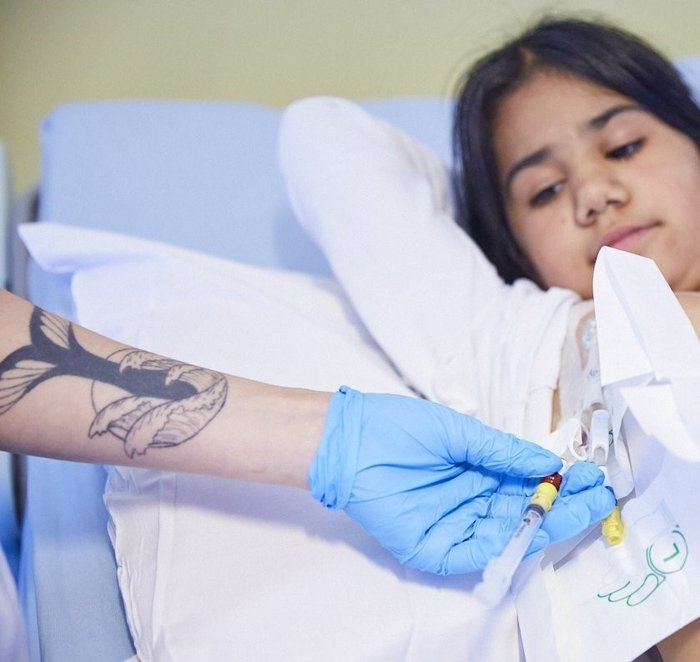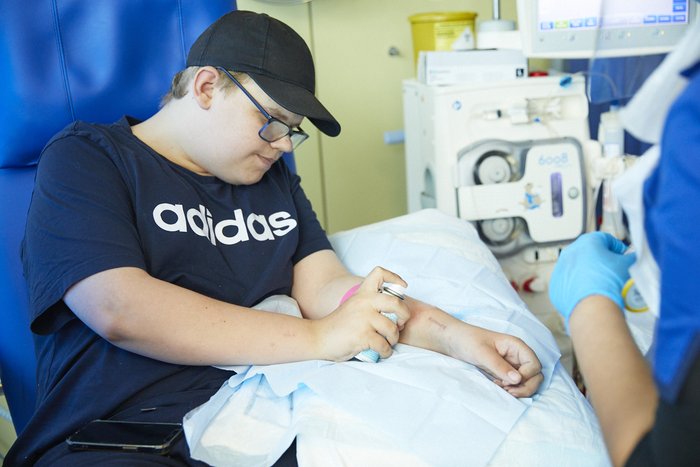Before dialysis can start, your child will need to have a catheter or line put into his or her body. This depends on the type of dialysis and how quickly dialysis is needed.
Your child will have an anaesthetic, special medicine, so he or she can sleep through the procedure and not feel any pain.
Haemodialysis access
There are different ways to get access to your child’s body for dialysis.
Central venous line (or ‘line’)
A central venous line (or ‘line’) is a catheter, a long, thin tube (catheter) that is placed into one of the large blood vessels in the body. This is usually in the neck or chest, or occasionally the groin. There are two ports at the ends of the catheter, which connect to tubes for each dialysis session.

Part of the catheter is inside the body, and part outside. The part of the body where the catheter comes out is called the exit site.
A line can be inserted shortly before the first dialysis session starts. There are two types of lines.
- Temporary line – for short-term dialysis
- Permanent line – for long-term dialysis. The catheter is inserted in the vein and then tunnelled under the skin to exit in a different position. For example, if the catheter is inserted in the neck, it will exit on the front of the chest. This means that the exit site cannot be seen when your child wears a shirt or blouse.
Fistula
An arteriovenous fistula, or fistula, is a connection between two types of blood vessels, a vein and an artery. This creates a larger, stronger blood vessel. For each dialysis session, one or two needles are inserted into the fistula – because it is a larger, strong blood vessel, it is easier to access. A special gel or cream can be used to stop your child feeling any pain.

The fistula is usually made in an arm (the arm that your child does not draw or write with). It needs to be made at least 8-12 weeks before the first dialysis session, so the vein has time to enlarge. Patients feel a ‘buzzing’ in the area around the fistula, and are shown how to take care of it.
For most children who will be on dialysis long term, a fistula is the best option for haemodialysis – it usually lasts longer and has lower risks of infection.
Peritoneal dialysis
Catheter
A peritoneal catheter, a soft plastic tube, is inserted through the abdomen (tummy).
A small cut is made in the abdomen to make a small hole. A catheter is inserted through the hole into peritoneal cavity. Children usually stay in the hospital overnight or longer to give time to heal.
The place where the catheter comes out of the skin is called the exit site. It needs regular dressing changes.
Paediatric renal unit and dialysis team
Where will my child be treated?
Dialysis takes place in a paediatric renal unit, a specialised unit that treats babies, children and young people with kidney conditions, or at home. Your child will be looked after by a paediatric nephrologist, a doctor who treats babies, children and young people with kidney problems.
If for any reason your child needs to be admitted to hospital, he or she will probably need to go to the paediatric renal unit rather than to your local hospital.